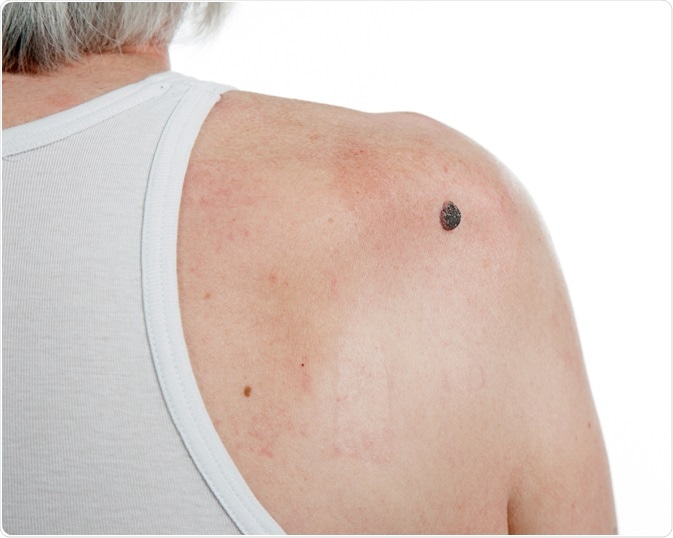The early diagnosis of squamous cell carcinoma (SCC) is crucial, as the tumor is easier to remove and treat when the affected area is smaller. There are a number of signs that can help to identify and diagnose SCC early.

Image Credit: SERGEI PRIMAKOV / Shutterstock.com
Particularly for patients at risk of the condition, it is important for individuals to recognize signs of abnormal skin cell growth and seek medical help when these symptoms appear. A health professional can examine the skin changes closely and perform the immediate treatment or take a skin biopsy to confirm the diagnosis.
Self-examination
Patients should be encouraged to regularly check their skin and monitor for any changes that may indicate abnormal cell growth and early signs of SCC. It is important to understand the pattern of marks on the skin, including moles, blemishes, and freckles, to recognize when changes present.
All areas should be examined in a well-lit room approximately once a month. Tumors can present on any area of the skin, including the palms, soles, scalp, ears, nails, and back. Family or friends may be able to help monitor areas of the body that are difficult to see, such as the back.
Any spot that is new, changed, or sore should be brought to the attention of a medical professional for further examination.
Understanding Squamous Cell Carcinoma
Health professional examination
In addition to self-examination by patients, a health professional should be involved in the screening for SCC, particularly for those individuals at high risk of developing the condition.
It is important to establish the family history of the patient to help gauge their risk of skin cancer, in addition to other risk factors for the condition, such as exposure to sunlight. Additionally, questions about when particular marks appeared and how they have changed in size or appearance should be addressed.
All areas of the skin should then be examined, and suspicious areas should be looked at more closely for specific characteristics that may suggest SCC, such as irregularity of shape. Any spots that have been noted to have abnormal growth should be examined more closely, looking at the size, shape, and color of the mark.
It may also be necessary to check for enlarged lymph nodes, particularly when there are suspicious spots on the skin that may be caused by SCC. This helps to establish the spread of cancer and navigate future treatment decisions.
Skin biopsy
Diagnosis can only be confirmed with a biopsy of the skin cells, which is tested for the properties of cancerous growth in a laboratory setting.
However, depending on the size, location, and particular characteristics of the case, the removal and treatment of the suspected area prior to confirmation of diagnosis may be necessary. Some treatment types involve the surgical removal of the tumor, which is referred to as a complete biopsy, which is then tested for cancerous properties and evidence that the entire tumor has been removed.
Differential diagnosis
When making a diagnosis of SCC, it is important to distinguish SCC from other health conditions with similar symptoms to ensure that the optimal treatment plan is followed. The conditions include:
- Actinic keratosis
- Allergic contact dermatitis
- Atopic dermatitis
- Atypical fibroxanthoma
- Basal cell carcinoma
- Benign skin lesions
- Bowenoid papulosis
- Chemical burns
- Limbal Dermoid
- Pyoderma gangrenosum
References
Further Reading
Last Updated: Dec 9, 2022